
Guests
- David Goodmanjournalist and author of the book Fault Lines: Journeys into the New South Africa.
Nelson Mandela was laid to rest on Sunday as South Africa bid farewell to the leader of its long walk to freedom. Mandela was buried in his home village of Qunu 10 days after his death at the age of 95. More than 100,000 people visited Mandela’s coffin as it lay in state over the past several days. We hear from anti-apartheid activist Ahmed Kathrada, who was imprisoned at Robben Island with Mandela, speaking at Sunday’s funeral. And we are joined by journalist David Goodman, author of the book, “Fault Lines: Journeys into the New South Africa.”
Transcript
AMY GOODMAN: We end today’s show on Nelson Mandela, turning to the anti-apartheid activist Ahmed Kathrada, who was imprisoned at Robben Island with Mandela. He was imprisoned with Mandela for 26 years. He spoke at Sunday’s funeral.
AHMED KATHRADA: Today, mingled with our grief is the enormous pride that one of our own has, during his lifetime, and now in your death, united the people of South Africa and the entire world on a scale never before experienced in history. Remarkably, in these few last days, the masses of our people, from whatever walk of life, have demonstrated how very connected they feel to you and how the story of your life is their story and how their story is yours. Madala, you have captured this relationship beautifully on the occasion of the death of our father, Comrade Walter Sisulu: quote, “We shared the joy of the living, and the pain. Together, we shared ideas, forged common commitments. We walked side by side through the valley of death, nursing each other’s bruises, holding each other up when our steps faltered. Together, we savored the taste of freedom,” unquote.
AMY GOODMAN: Ahmed Kathrada, speaking at Nelson Mandela’s funeral on Sunday.
We’re joined now by journalist David Goodman, author of the book Fault Lines: Journeys into the New South Africa, who was with Nelson Mandela, visited his final prison and also went to Qunu, where President Mandela was finally laid to rest on Sunday. David also happens to be my brother.
Welcome, David. Your thoughts today on Nelson Mandela’s passing and where he was buried, in Qunu?
DAVID GOODMAN: Well, it’s a remarkable journey, and it’s been remarkable to see these images all week. I was in South Africa writing Fault Lines and covering Mandela and the Truth Commission back in 1996, and there’s an interesting connection between his last prison, that I visited with Mandela, and Qunu, where he was buried yesterday. He modeled the home that he built in Qunu on his last cell, which was actually a little cottage on the grounds of what was then a maximum security prison, of Victor Verster Prison, outside of Cape Town.
Qunu was also in the heart of a former apartheid Bantustan, or homeland, called the Transkei, which when I was in South Africa at the height of apartheid in the ’80s was—had actually been declared an independent country by South Africa, populated only by black South Africans. It was a way of dispossessing blacks of citizenship in their home country. And it had all the trappings of a country. I had to pass through border posts, had my passport stamped, and there was a Transkei defense force. And it—this so-called independent homeland, which no one recognized except South Africa, actually existed until Mandela became president in 1994.
AMY GOODMAN: Talk about that visit you made to Victor Verster Prison, how you ended up there with Nelson Mandela.
DAVID GOODMAN: I received a phone call one day in 1996 when I was in South Africa and covering the Truth Commission and Mandela, and it was from President Mandela’s press aide, asking me if I would like to go to jail with Nelson Mandela. I was a little stunned by the question, and it took me a second to figure out what was going on. And she was inviting me to return with Mandela to the last of three prisons that he—he spent 27 years in prison, as we know. The last two years were in Victor Verster Prison.
So, I of course jumped at the chance and, that afternoon, found myself on the grounds of this prison looking for his cell, which turned out to be this pleasant little cottage surrounded by rosebushes. President Mandela showed up, walked through a little rose garden, immediately broke into a big smile. And he said, “Some of the best years of my life were spent here.” And I looked at him—there were just about a half-dozen or eight reporters—and I said—I mean, this was a very odd thing for a prisoner to say about his prison. And I asked him, “Why?” And he said, “It was because this is where we met with the leadership of the ANC for the very first time.” So, it was—Mandela was released from jail in 1990. So, for the last year or two, the leaders of the ANC, who he had not seen—this was the modern leadership—was coming to this prison to meet with him.
I then asked President Mandela if he ever considered escaping. It would have been very easy. His jailer, who was also his cook, was actually taking him home to his apartment for home-cooked meals and to drive around, covertly, Cape Town. And so, Mandela replied to me, no, he never considered escaping. He said, “It would have been contrary to what we were trying to achieve.” And what was going on at that time in South Africa is that Mandela was a prisoner, but he was holding the white apartheid government hostage, because as long as he was in prison, the apartheid regime were pariahs on the international stage. So it was a remarkable dance, or wrestling match, that they were locked in. And then, to finish that day—
AMY GOODMAN: Five seconds.
DAVID GOODMAN: Yeah, to finish that day, he then was with his former prison guards and thanked them and said it is because of them, and sort of recognizing one another’s common humanity, that he was able to do the kind of political reconciliation for which he is now rightly world-famous for.
AMY GOODMAN: David, thanks so much for joining us. David Goodman, author of the book Fault Lines: Journeys into the New South Africa. We’ll link to your articles in The Boston Globe and Mother Jones.

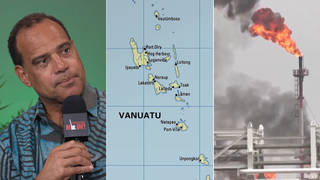
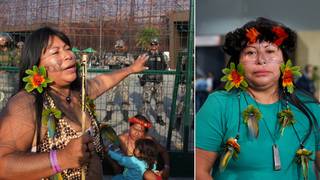
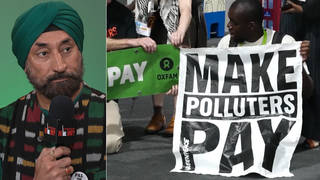






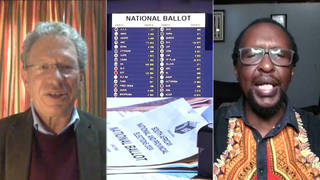
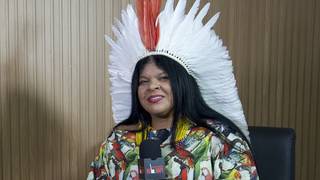
Media Options